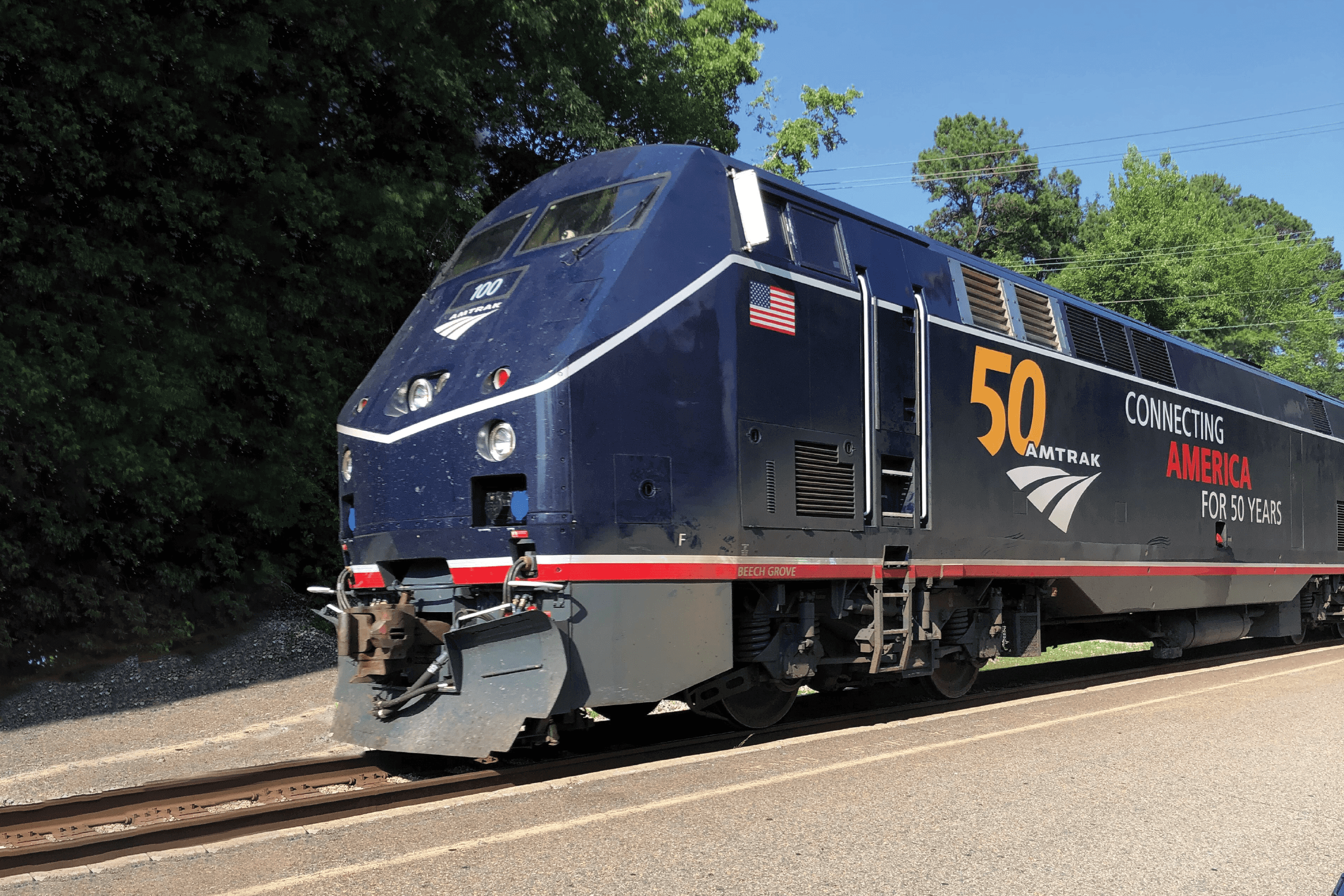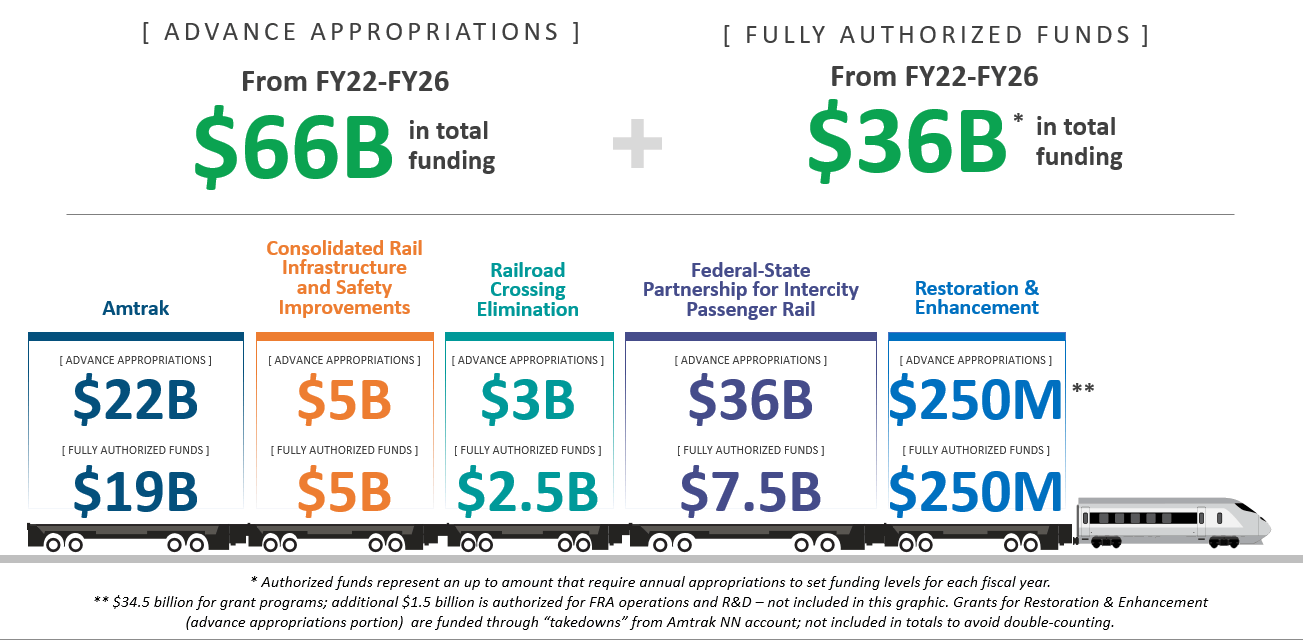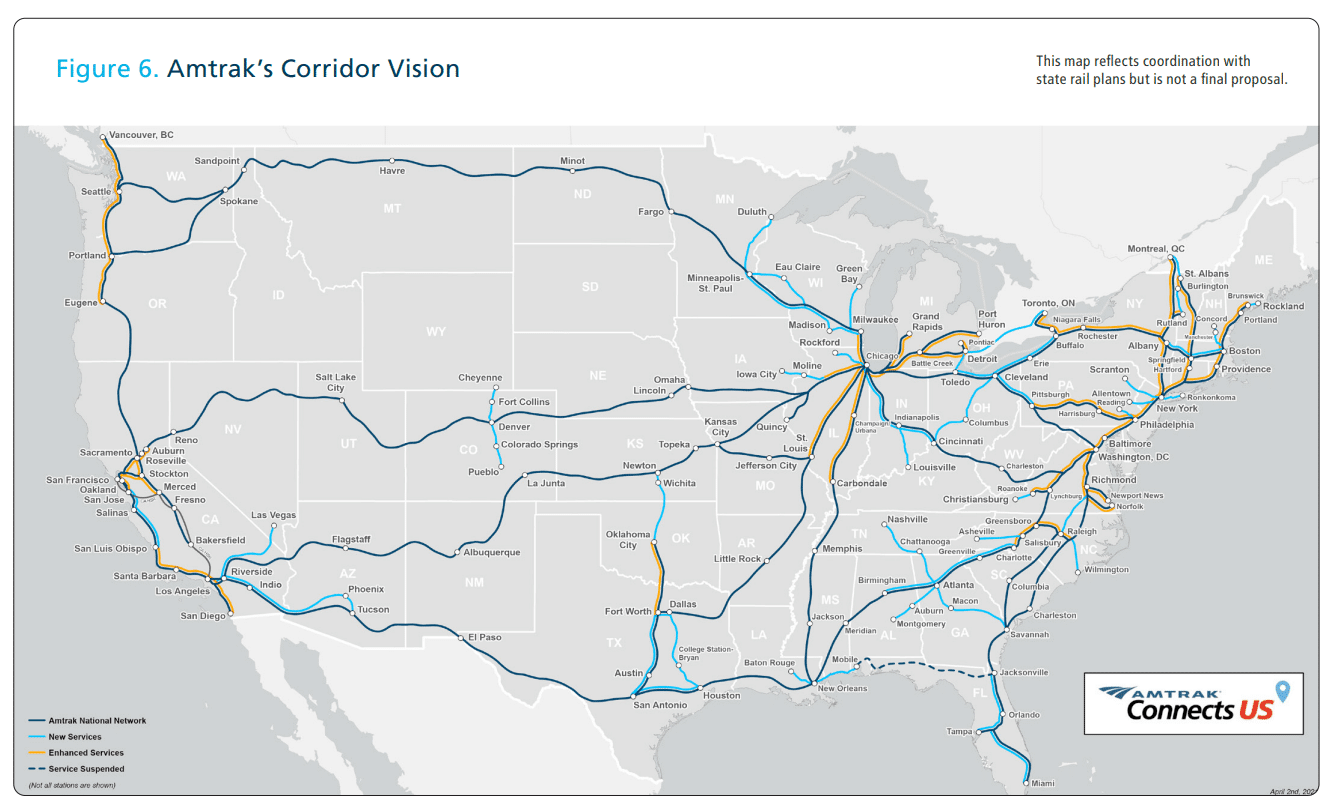- March 21, 2023
- Perspectives, Trending Topics
All Aboard the Rail Revolution: How Federal Funding and New Service Models Will Transform Rail Infrastructure


Corey Hill
National Rail Practice Lead
In the past three months, the Federal Railroad Administration (FRA) unlocked more than $13.5 billion for capital projects to establish, improve, or expand intercity passenger rail service. These opportunities to apply for funding tap into the $102 billion in federal rail funding from the Infrastructure Investment and Jobs Act, also known as the Bipartisan Infrastructure Law (BIL).
The BIL funds mark a historic investment in U.S. passenger rail. This Q&A summarizes the changes and previews how U.S. passenger rail will evolve in the next decade.
How does this new FRA funding differ from past programs?
First is the sheer volume of investment. As the notice published in the Federal Register in May stated:
“…the enactment of the BIL has provided a historic, unprecedented level of funding for the improvement and expansion of intercity passenger rail service. Importantly, the BIL requires the establishment of the Corridor Identification and Development Program—a formal framework to guide the future development of intercity passenger rail throughout the country. Unlike previous intercity passenger rail planning efforts, the Corridor ID Program is intended both to support a sustained long-term development effort, and to set forth a capital project pipeline ready for Federal (and other) funding.”
Second – and the reason we call this a “revolution” – is that earlier programs prioritized infrastructure first and then determined the service plan. Funds from new programs switch the model. First come service development plans for improved or new passenger services that prioritize safety, reliability, and efficiency, while aligning with freight railroad operations. Then, infrastructure investments informed by the service development plan follow to help deliver the desired service.
Why is the federal government investing so much in rail?
Rail has an enormous upside in helping the U.S. meet its economic and environmental goals. National policy now recognizes that elevating intercity passenger rail significantly benefits travelers and communities. Improvements will revitalize cities and entire rail corridors not only with jobs in the next few years, but also with an attractive and efficient mode of transportation.
Similarly, policymakers understand the constraints of interstates in dense travel areas. Simply put, some highways are approaching buildout. The cost-benefit analysis in many markets no longer supports adding more lanes. In other words, a new interstate lane might be full in five years, whereas train lines will add greater and more affordable capacity over longer periods of time.
Why is a service-based approach sensible for rail enhancements?
Many industries build or acquire capital assets (new facilities, more equipment, etc.) as their businesses grow. At some point though, most businesses take a step back and evaluate if their capital assets are performing to the level they should or if their assets are underutilized and may no longer be needed.
In the last five years, the rail industry has undertaken that assessment. Rail operators realized they can do more with less, rather than doing more with more. To inform these decisions, new service planning models are being developed and utilized, turning traditional modeling on its head.
In the past, if two trains needed to be in the same place at the same time, operations models would suggest more track to be laid for trains to get around each other. However, new service planning models first ask if the trains must meet at the same place at the same time. Avoiding these conflicts by analyzing different scheduling scenarios to better utilize available track capacity can often result in millions in savings, reduce impacts on right of way, and ensure program funding is preserved for must-have improvements.
How did we get to a service-based approach?
We learned from experience. Transforming Rail in Virginia used a service-oriented approach to plan its rail corridor enhancements. Rather than starting with how much infrastructure could fit in the corridor, Commonwealth of Virginia agencies analyzed the existing and future passenger rail service market in the I-95 corridor.
From that, they:
- Analyzed how existing services needed to be modified and grown to meet desired markets.
- Identified what infrastructure would be required to deliver desired rail services.
- Coordinated with the freight railroads on a comprehensive corridor management approach to ensure the successful operation of all services, not just passenger rail, in the corridor.
This allowed Virginia to further benefit by improving the competitiveness of freight operations in the corridor to relieve truck congestion on Virginia interstates and support the growth of the Port of Virginia – one of the state’s most important economic assets.
Amtrak COO Stephen Gardner summed up the outcome as “a model for the nation of how to grow passenger and freight service together.”
What do rail enhancements mean for authorities and travelers?
Authorities’ and agencies’ plans will need to be based on what services passengers will need. As a result, effective rail corridor programs will require detailed, phased service development plans, allowing program dollars for improvements to be maximized while service performance is optimized.
For travelers, it means that new services are likely to arrive sooner because of phased corridor improvements. In other words, incremental investments will yield incremental benefits. The FRA is emphasizing that agencies first establish marketable services in corridors and then grow those as demand increases and funds are available to further improve the corridor.
How will the FRA choose rail corridors and projects to invest in?
Proposed corridors will be evaluated by 14 criteria (see Section D of the Corridor ID Notice). These include common-sense metrics such as projected ridership, trip times, revenues, capital investment, operating funding requirements, and employment impacts.
The FRA Corridor ID Program will consider several types of intercity passenger rail routes:
- New rail routes less than 750 miles
- Enhancement of existing rail routes less than 750 miles
- Restoration of service over routes formerly operated by Amtrak
- Increased service frequency of a long-distance intercity passenger rail route
These rail projects also include public benefits such as environmental improvements, congestion mitigation, equity, diversity, and competitiveness with other transportation modes. When possible, the FRA seeks to fund projects targeting “at least 40 percent of resources and benefits towards low-income communities, disadvantaged communities, communities underserved by affordable transportation, or overburdened communities.”
Another category of the criteria is how well a corridor would integrate into the national rail passenger transportation system, including if a corridor connects at least two of the country’s 100 most populated metropolitan areas.
How can rail agencies develop service-based approaches in new corridors when they don’t know what the service usage will be?
Rail agencies will need new levels of planning to identify and forecast service needs. New forecasting tools using GIS data, cell phone data, comparable passenger rail market data, and other sources can determine the viability of markets in potential corridors. Rail agencies can also forecast highway traffic between two cities for the next five to 20 years, accounting for population changes and highway capacity.
What are the next steps in rail corridor planning?
State and local governments and rail authorities will submit corridor plans to the FRA. Grant applications for FRA funding must improve, enhance, or expand passenger rail service, and applicants can learn about the grant programs and processes at the FRA website.
The FRA will issue Notices of Funding Opportunities (NOFOs) to fund improvements and build out regional corridors during the duration of the five-year BIL. Remember, there’s $102 billion dedicated to rail!
Once projects receive funding, construction and improvements will occur in phases. These are time- and capital-intensive projects, but an incremental approach will bring new services online quickly.
About the Author

Corey Hill
Corey Hill has nearly 30 years of experience in federal, state, regional, and local rail projects. Today, in working with his clients, he is leading the way on transformational rail service enhancement and corridor development programs in Virginia, North Carolina, the District of Columbia, Utah, Oklahoma, and Florida. His past experience has ranged from multimodal transportation investment plans to multibillion-dollar rail and transit projects. He has developed and led the implementation of policies and programs for rail, transit, and transportation demand management programs at local, regional, state, and federal levels. At the Federal Railroad Administration (FRA), Corey led the High-Speed Intercity Passenger Rail Program, served as the Director of the Office of Program Delivery, and served as the Executive Director of the agency. Corey led the agency's programs benefiting passenger and freight railroads across the country as well as multi-disciplinary teams that helped grantees deliver hundreds of projects involving over $25 billion of federal investments.


